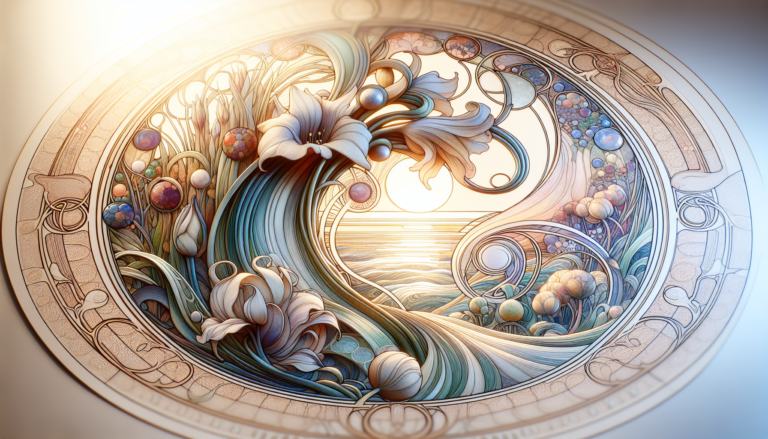Design style is an ever-evolving concept, and one of the most captivating movements in history is Art Nouveau. Emerging in the late 19th century and peaking between 1890 and 1910, this artistic expression focused on ornamentation and was characterized by its organic forms and intricate details. If you’re someone who appreciates aesthetics, you might find yourself drawn to the whimsical elegance of Art Nouveau.
At its core, Art Nouveau was a reaction against the rigidity of academic art and the industrial age’s often harsh geometries. It sought to harmonize art with nature, so you’ll notice many flowing lines, floral and plant motifs, and graceful, curving designs. Whether you’re admiring a piece of jewelry or a building, the style invites you to pay closer attention to the subtleties of craftsmanship and the beauty of natural forms.
As you explore deeper, you’ll find that Art Nouveau is about visual appeal and the idea of art as a total environment. Artists, architects, and designers of this era believed every object could be transformed into a work of art. Therefore, you may encounter a seamless integration of art into architecture, furniture design, glasswork, and even textiles. Iconic creators like Alphonse Mucha and Antoni Gaudí exemplified this ethos through their innovative designs, captivating you with their unique perspectives.
One of the most striking features of Art Nouveau is its emphasis on handmade craftsmanship. In a time when industrial production was becoming more common, many artists returned to traditional techniques, believing that the human touch imparted a depth of emotion that machines could not replicate. If you find this ethos appealing, you might appreciate seeking out handmade Art Nouveau pieces to connect with the movement’s spirit truly.
Geographically, Art Nouveau saw various iterations, with notable influences across Europe. In France, it was known as “Style Liberty,” while in Belgium, it was called “Stijl.” Each region contributed flair to the movement, allowing you to experience diverse expressions of Art Nouveau style in cities like Paris, Brussels, and Vienna. When you visit these places, you can immerse yourself in their architectural jewels adorned with flowing lines and nature-inspired motifs.
In terms of materials, Art Nouveau artists were not afraid to experiment. You would encounter a wide array of materials, from wrought iron and glass to ceramic and wood, all utilized to emphasize the curvilinear forms that define the style. This versatility makes Art Nouveau an enduring influence in contemporary design, resonating with modern sensibilities while honoring its roots.
Today, Art Nouveau continues to inspire artists and designers around the world. You might find its elements reimagined in graphic design, interior spaces, and even digital art. Understanding this movement allows you to appreciate the timeless beauty of nature intertwined with artistic expression and helps you connect deeper with art in your surroundings. Embracing the principles of Art Nouveau can enhance your appreciation for aesthetics and inspire your creative endeavors.
